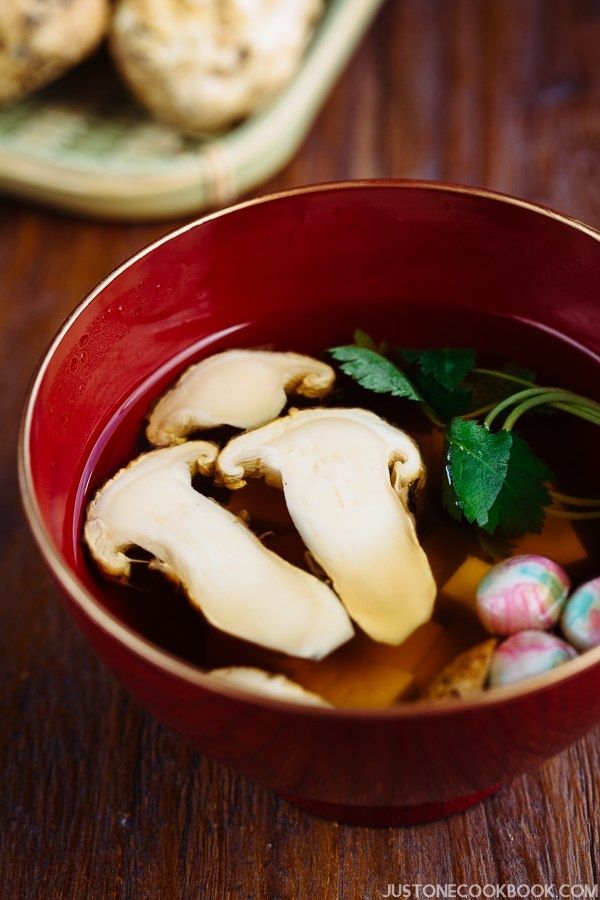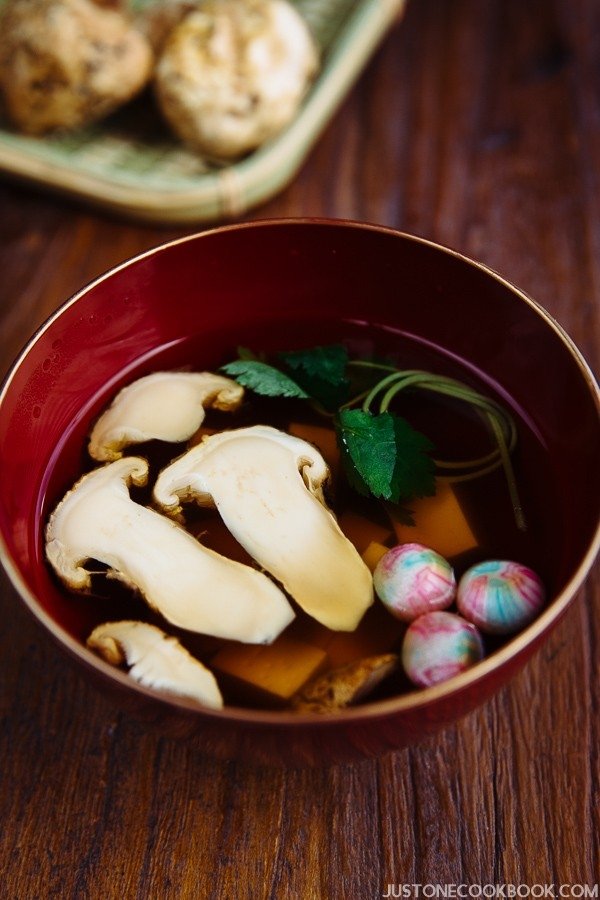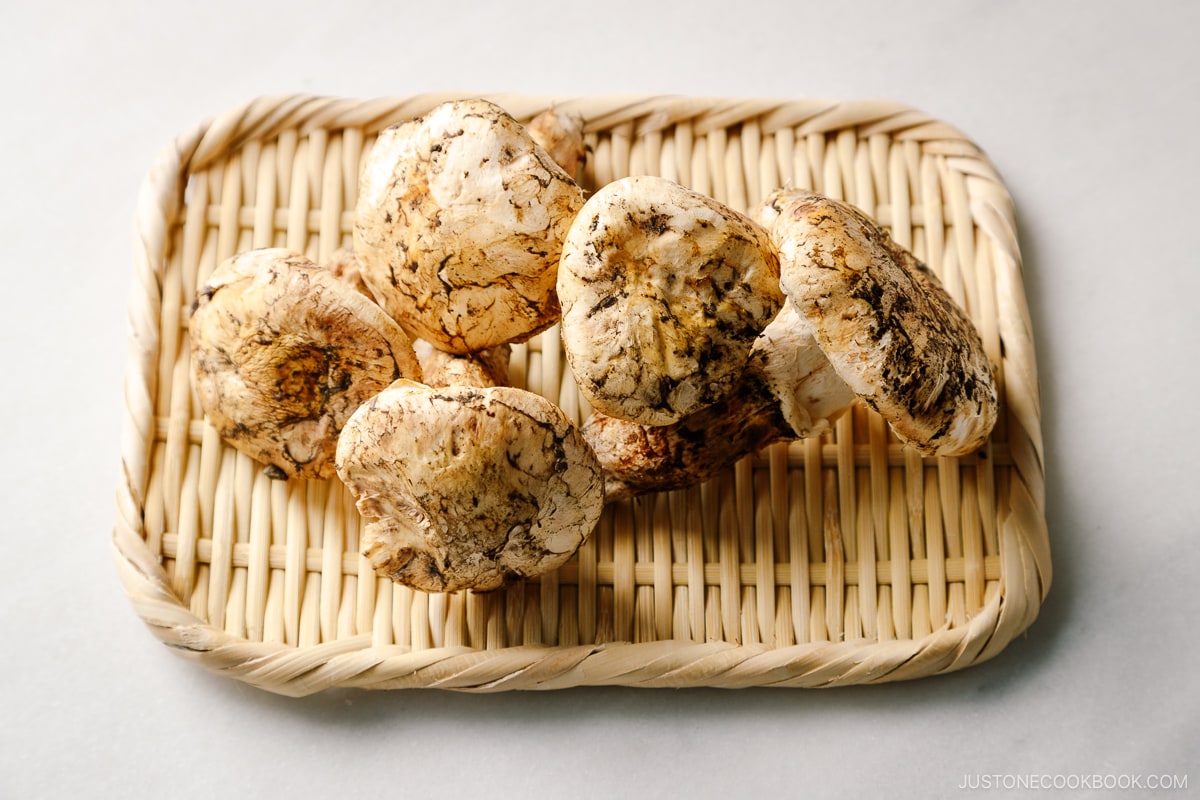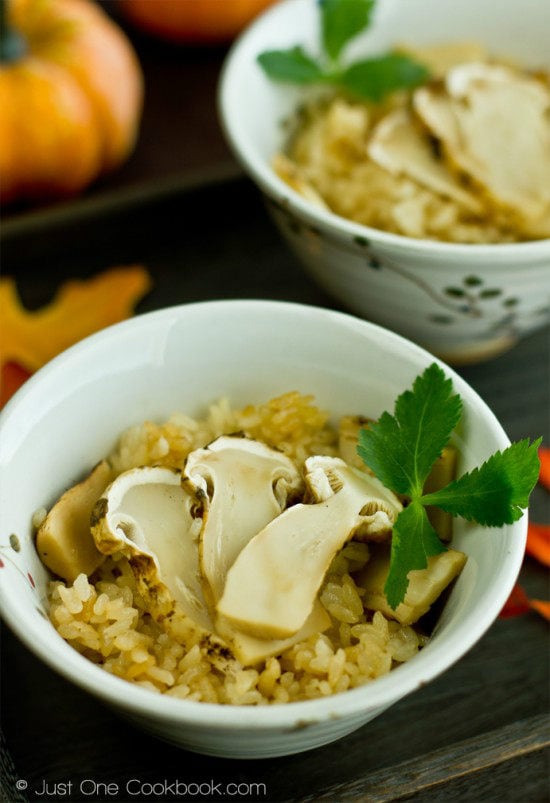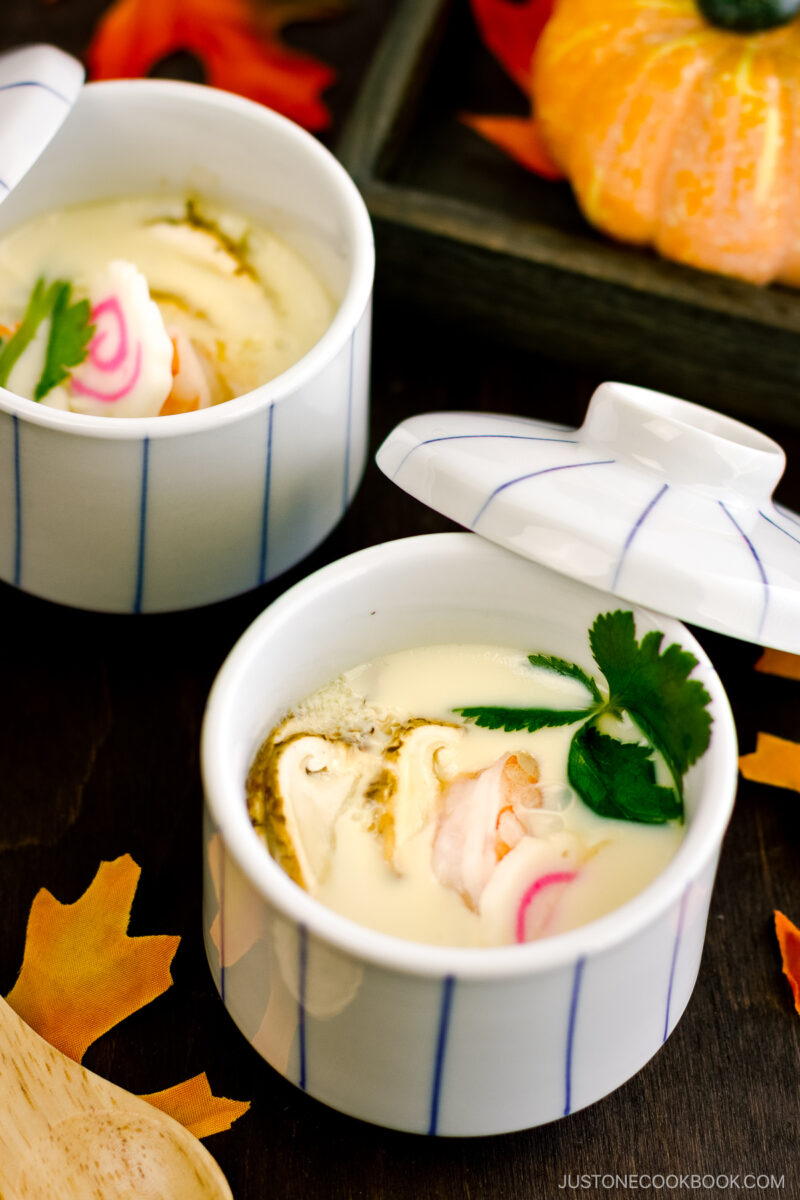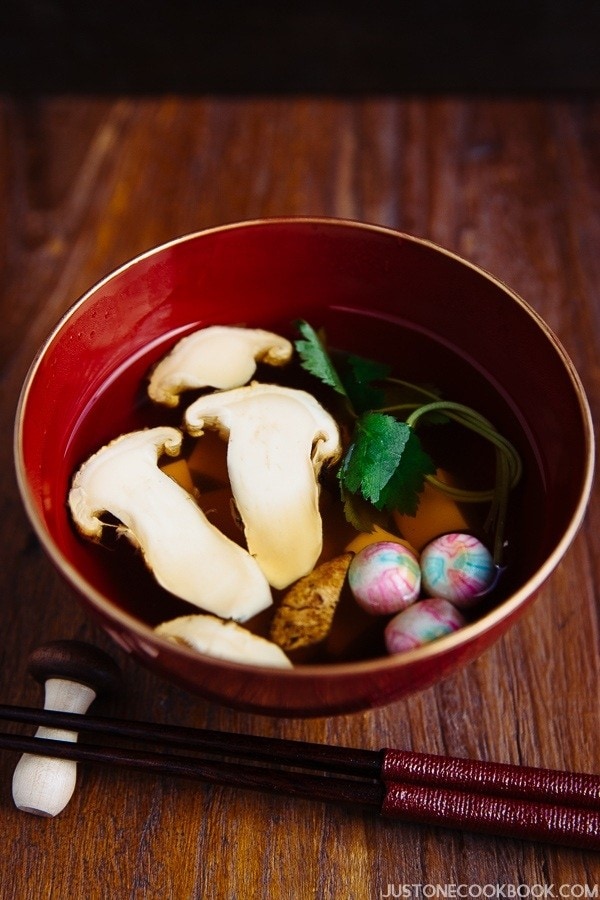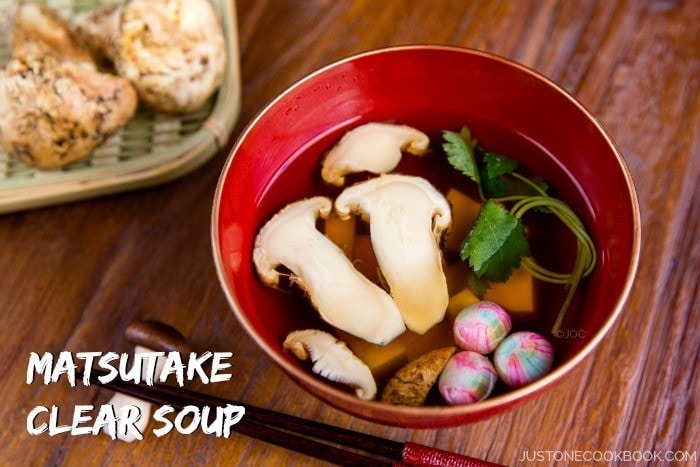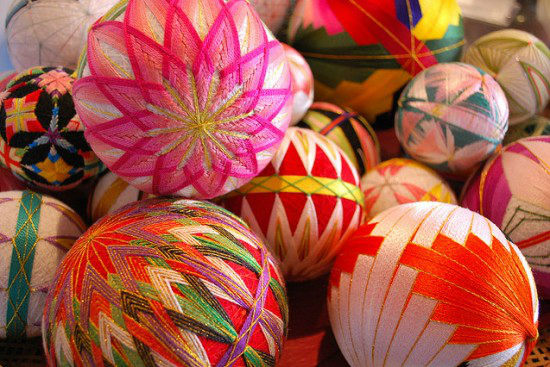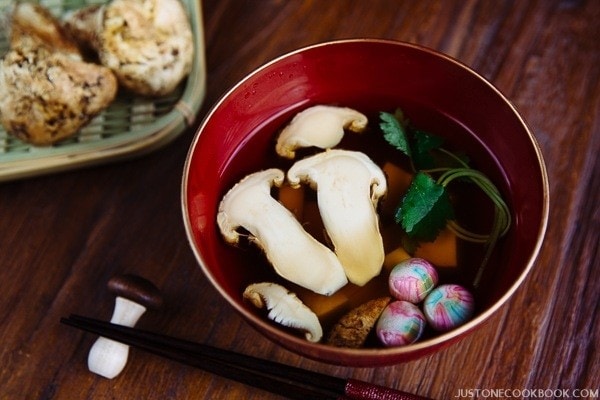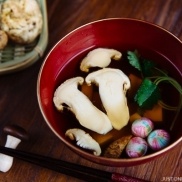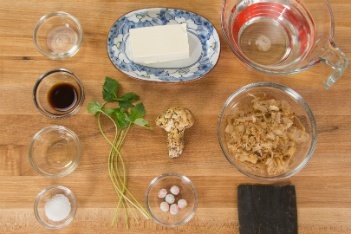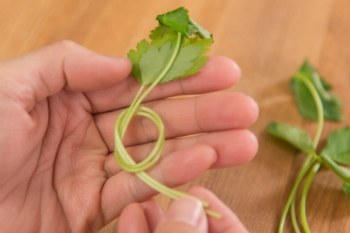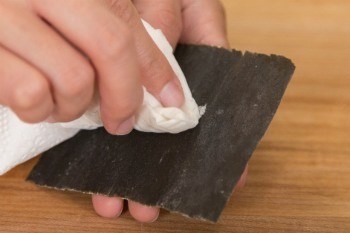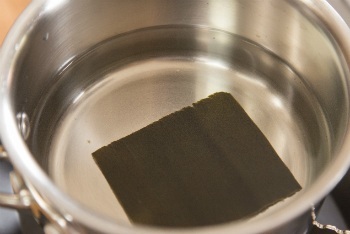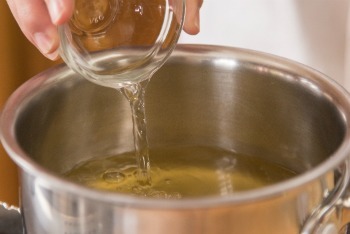Matsutake Soup (松茸お吸い物) is a classic Japanese autumn soup with highly-prized fragrant matsutake mushrooms in clear dashi broth. This type of soup does not have miso paste, and is called Suimono or Osuimono which means “food you can sip”.
What is Matsutake Mushroom?
If you are a seasoned mushroom forager or mushroom connoisseur, you’ve probably heard of matsutake mushrooms. An aromatic mushroom found near specific species of pine tree, matsutake are large firm mushrooms that are ivory in color. In Japanese, matsu (松) means pine and take (茸) means mushroom. It has a very distinct taste and smell like no other food. Imagine a mushroom with extremely concentrated smell of pine wood. Matsutake holds a special place in the culinary world in Japan just like truffles are to French people. We also strongly believe that eating matsutake have many health benefits and one of it includes reducing the free radicals that lead to cancer. The Japanese has many different preparations for this savory mushroom. One of the simplest ways to enjoy this prized mushroom is by simply grilling it and seasoned with only soy sauce and mirin. We also use it to infuse other dishes like rice or chawanmushi. In Japan, due to an issue with pine roundworm, the production has decreased over the past few decades. However, the mushroom is also grown in other parts of the world. The ones I buy from the local market are from the US (Oregon/Washington areas).
Alternatives to Matsutake Mushroom
For this clear soup recipe, if you cannot find matsutake locally, you can substitute with other kind of mushrooms. You can also experiment with other ingredients you think that will work for a clear delicate soup. My recommendation is to choose ingredients with simple flavor as they can’t overpower the subtle yet rich flavor of dashi broth. Try to combine a nice selection of colors and shapes. As for dashi, you can use convenient dashi powder instead of making the dashi soup base from scratch to save time. But for a simple dish like this where seasonings are minimal, good broth made from scratch will make a huge difference for the resulting flavor. For this simple homemade dashi recipe, I cut down some extra steps from my original dashi recipe. All you need is kombu and katsuobushi, and they are available at most Asian supermarkets and not necessarily just in Japanese supermarkets. Looking at the image above, you might wonder about those cute little pink balls in the soup. They are called Temari Fu (手まり麩). Fu (麩) or Ofu (お麩) is wheat gluten that is often used as meat substitutes (read more details here). Temari is a traditional Japanese ball made by kimono scraps (see the photo below). I included these balls to add nice accent to the color of the soup. I brought these back from my Japan trip, and unfortunately this type of fu is hard to find outside of Japan. Aren’t they beautiful? You can try making these gorgeous Temari Sushi! Aromatic, healing, and cleansing, Matsutake Soup can literally warm you from head to heart when the weather is starting to cool down. I hope you enjoy the recipe as much as I do. Wish to learn more about Japanese cooking? Sign up for our free newsletter to receive cooking tips & recipe updates! And stay in touch with me on Facebook, Pinterest, YouTube, and Instagram. Editor’s Note: The post was originally published on October 12, 2014. The content has been updated in October 2017.
